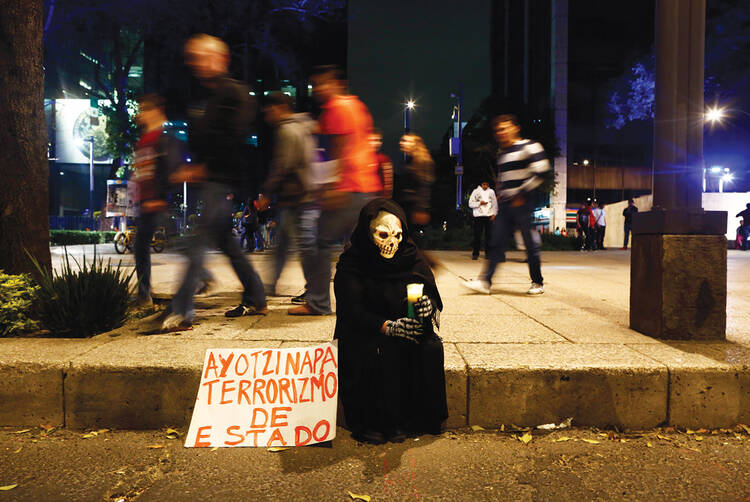The Mexican government delayed investigations into the enforced disappearances of 43 students in Iguala, Guerrero State, and the killing of 22 people in Tlatlaya, Mexico State, the New York-based Human Rights Watch alleged in a report released on Nov. 7. In the Tlatlaya case, state prosecutors sought to cover up military wrongdoing by coercing false testimony from witnesses.
Years of brutality during the war on drugs have numbed many Mexicans to the nation’s ongoing violence, but these recent incidents have rocked Mexican society, provoking protests around the country among citizens, especially young people, who appear finally fed up with government incompetence, corruption or, worse, collusion with drug cartels.
“These are the worst atrocities we’ve seen in Mexico in years, but they are hardly isolated incidents,” said José Miguel Vivanco, Americas director at Human Rights Watch. “Instead, these killings and forced disappearances reflect a much broader pattern of abuse and are largely the consequence of the longstanding failure of Mexican authorities to address the problem.”
The rights group charges that in the Iguala case, officials waited 10 days after the students disappeared before opening an investigation. In the Tlatlaya case, it took the attorney general’s office three months to intervene.
On Nov. 3 the Catholic bishops of Acapulco released a letter to the families of the students, urging them to live their faith in these tragic moments without succumbing to violence. “We encourage you to continue to look ahead,” the bishops said. “Have hope because hope pushes to keep fighting, to continue to live with dignity, to continue working for a better world.” The bishops committed themselves to supporting these latest grieving families as they have already supported “thousands of families who in recent years have experienced situations like yours, such as kidnappings, extortions, forced displacement and death of a member of family.”
In a previous letter released on Oct. 2, the bishops noted, “We are amazed and concerned about the way the police behaved in this case.... We urge the authorities to fully clarify the painful events that happened because the truth is the path to justice and reconciliation.”
The mystery of the missing students has galvanized critics of the nation’s ineffective response to rampant drug-related violence or its outright collusion with drug gangs to commit or cover up acts of violence. Thousands across Mexico participated in the Ecumenical Day of Solidarity, 43 hours of prayer and fasting for the 43 “disappeared” students, that culminated on Nov. 6. Organizers described the effort as “a way to feed our hope against apathy, fear, death and impunity.”
On Oct. 29 Mexico’s attorney general reported that the identities of bodies found in Cocula, 30 minutes away from Iguala, were still under investigation, but witnesses told police that a group of armed men had thrown the bodies into a landfill. Dozens of bodies have turned up in 12 mass graves so far discovered as investigators sought to resolve the fate of the students. Since 2006, the United Nations estimates that more than 106,000 have died in mostly drug-trade related violence. In 2012, according to Mexico’s national statistics institute, just 1.8 percent of registered homicides resulted in a criminal sentence.
In the Tlatlaya episode, military personnel killed 22 people inside an empty warehouse on June 30. Accounts from witnesses said that at least 12 of them were extrajudicially executed.
In the Iguala attack, approximately 30 municipal police officers opened fire on three buses carrying about 90 students on Sept. 26, wounding more than 15. During that incident and a subsequent attack, six were killed.
The municipal police ordered students to exit a third bus, beat them and forced them at gunpoint to lie down on the side of the road, witnesses told Human Rights Watch. The policemen then forced the students into at least three police cars and drove away with them, the last time the 43 were seen alive.








